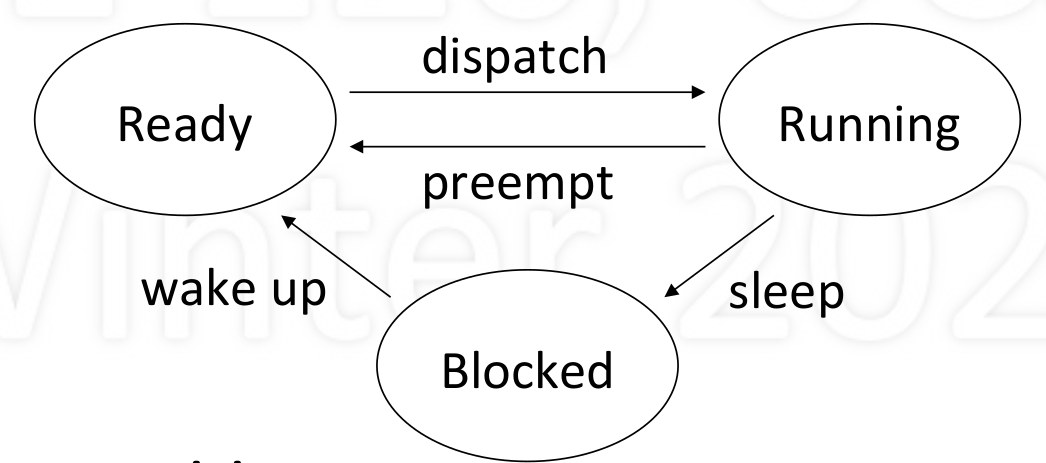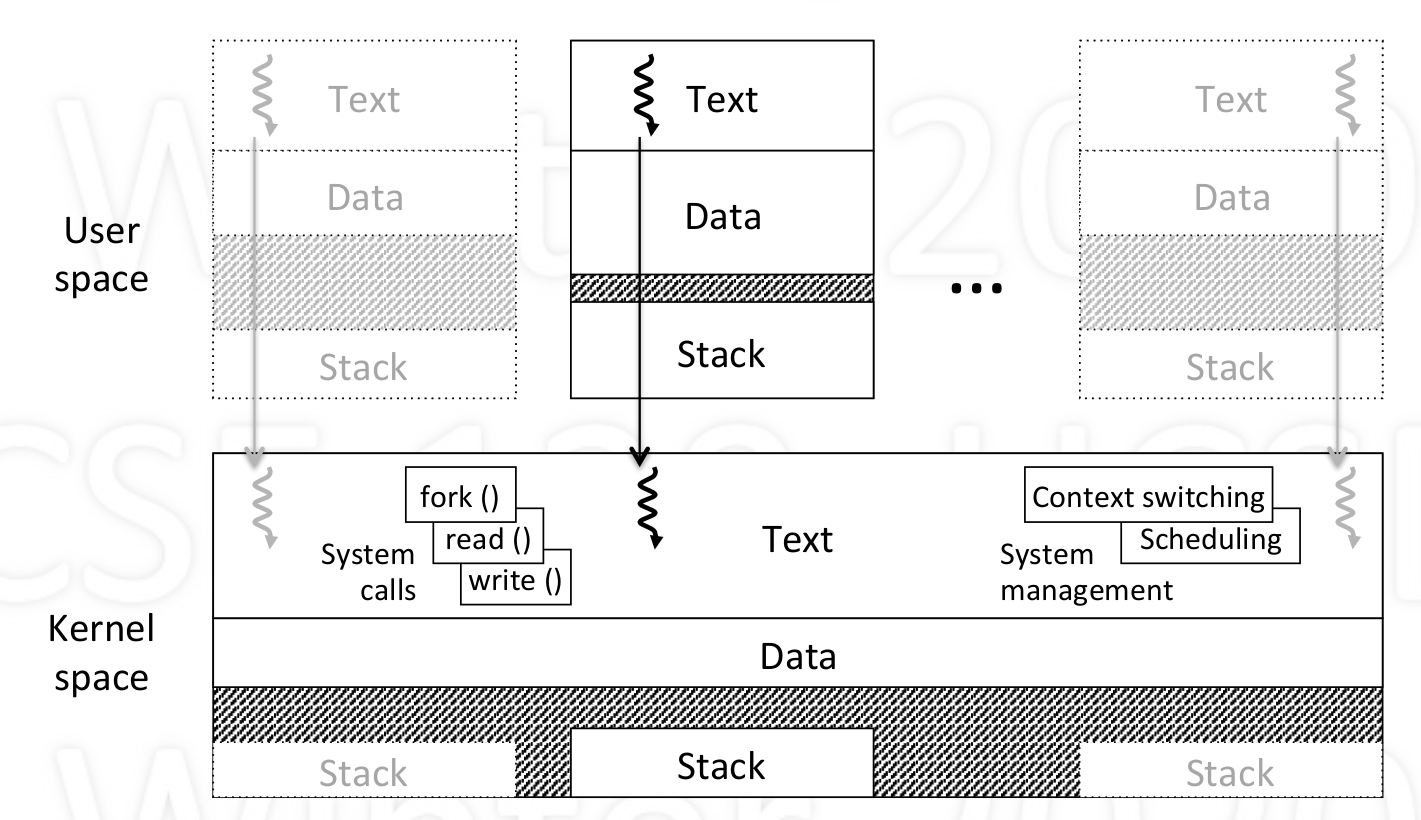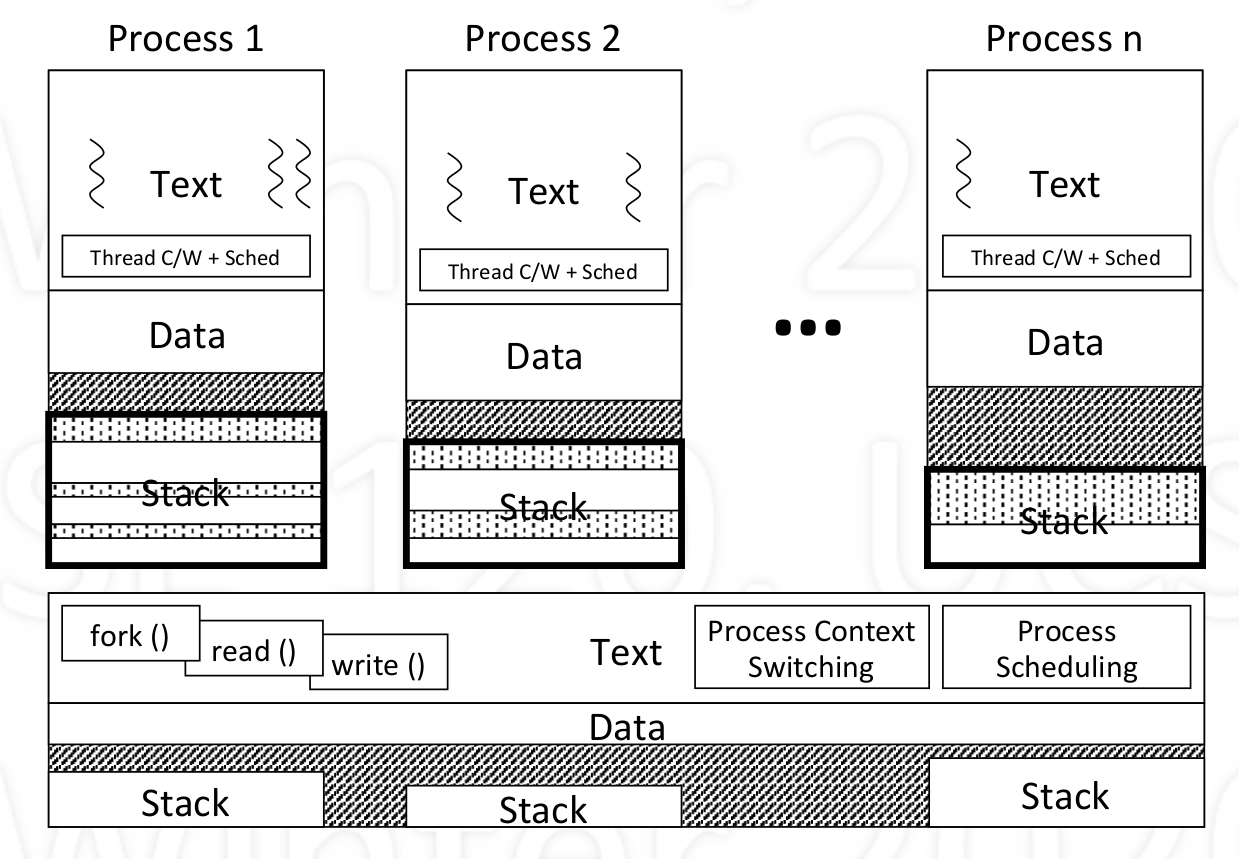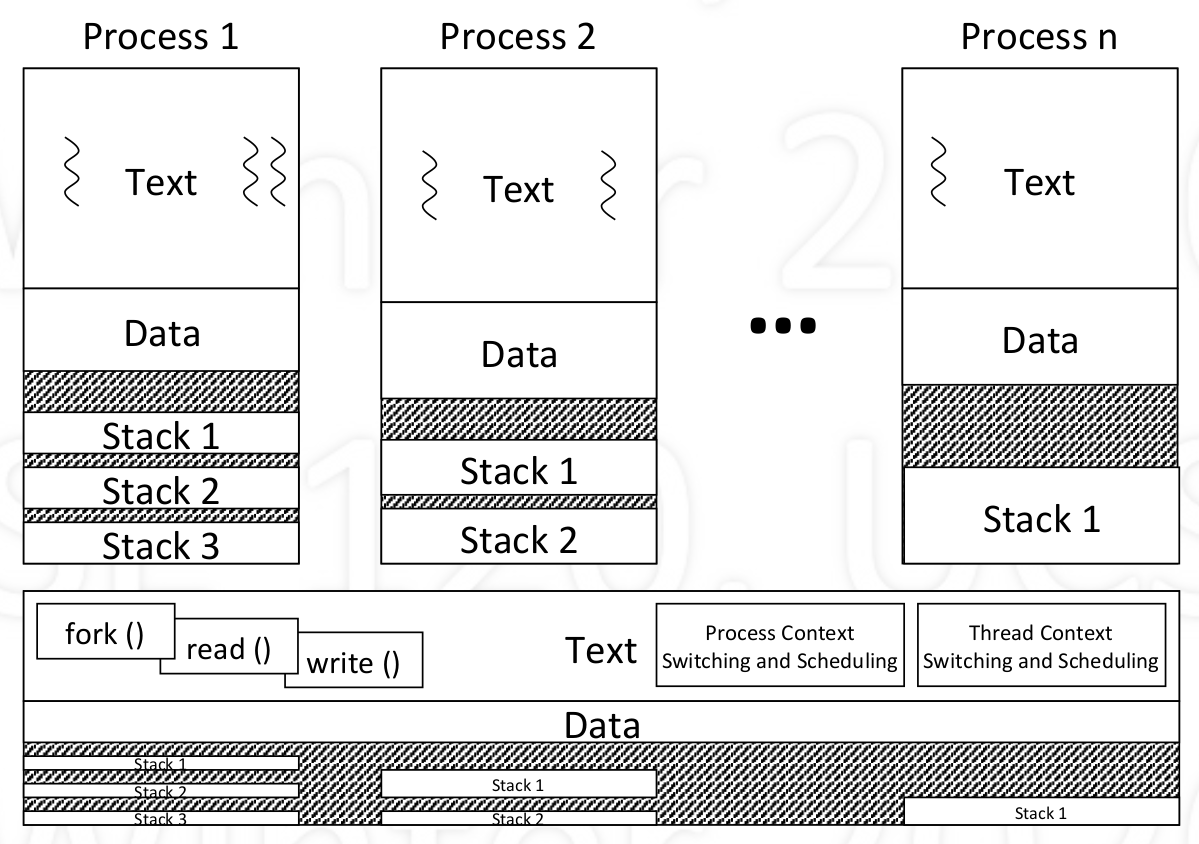本文是我在上UCSD的 CSE 120: Principles of Operating Systems (Winter 2020) 整理的笔记,第二课主要介绍了分时系统里时间分配的概念,以及内核 (kernel) 和用户 (user) 层面上实现thread的区别以及优缺点。
Definition
- Multiple processes share single CPU resources
- Conceptually, each process makes progress over time
- Practically, each perioadcally get quantum of CPU time
- quantum : a basic time unit for CPU to allocate for a cycle
- Illusion of parallel progress by rapidly switching CPU
Implementation
- Kernel keeps track of progress of each process
- Divided the states (progress) of each process:
- Running: actually running (making progress), using CPU
- Ready: able to make progress, but not using CPU
- Blocked: unable to make progress (waiting other resources like memory, I/O etc), cannot use CPU
- Kernel selects a ready process and let it use CPU
Process State Diagram

- Dispatch: allocated the CPU to a process
- Preempt: take away CPU from process
- Sleep: process gives up CPU to wait for event
- Wakeup: event occurred, make process ready
Kernel
- A seperate memory space that store kernel code that support user processes to run
- systems calls: fork(), exit(), read(), write(), yield(),…
- management: context switching, scheduling,…
- Keep track of state of each process
- each process has a unique ID
- Store other info needed
- areas of memory being used
- contents of CPU contexts
- other…
- runs as an extension of current process
- when system call (process give up control to kernel voluntarily)
- hardware interrupt (preemption)
- timer
Has text, data and multiple stack (each for each process/thread)
even if two process share the same code, use seperate memory(text, data, stack) to store state of each process

- A seperate memory space that store kernel code that support user processes to run
Threads
- It’s a single sequential path of execution
- Abstraction: independent of memory(may have different implementation like user-level and kernel-level)
- A thread is a part of a process
- Lives in the memory of a process (share global variable)
- Multiple threads may exist in a process
- To the user: unit of parallelism
- To the kernel: unit of schedulability
User-level threads vs Kernel-level threads
user-level thread:
- Implement stacks for different threads in user space (actually share the stack in kernel)
- Pros:
- Threads call and management in user level
- Efficient: no need to trapped into kernel (which is heavy)
- No need for kenerl support of threads
Cons:
- no true parallelism (kernel see no threads but process)
mulitple CPU cannot let multiple threads in one process run at the same time

kernel-level thread:
- Implement stacks for different threads in kernel space
- Pros:
- can achieve true prallelism
Cons:
overhead: thread switch requires kernel call

Distinguish:
- Where is the thread abstraction supported: kernel code or user code
- Where is the thread running: user space or kernel space